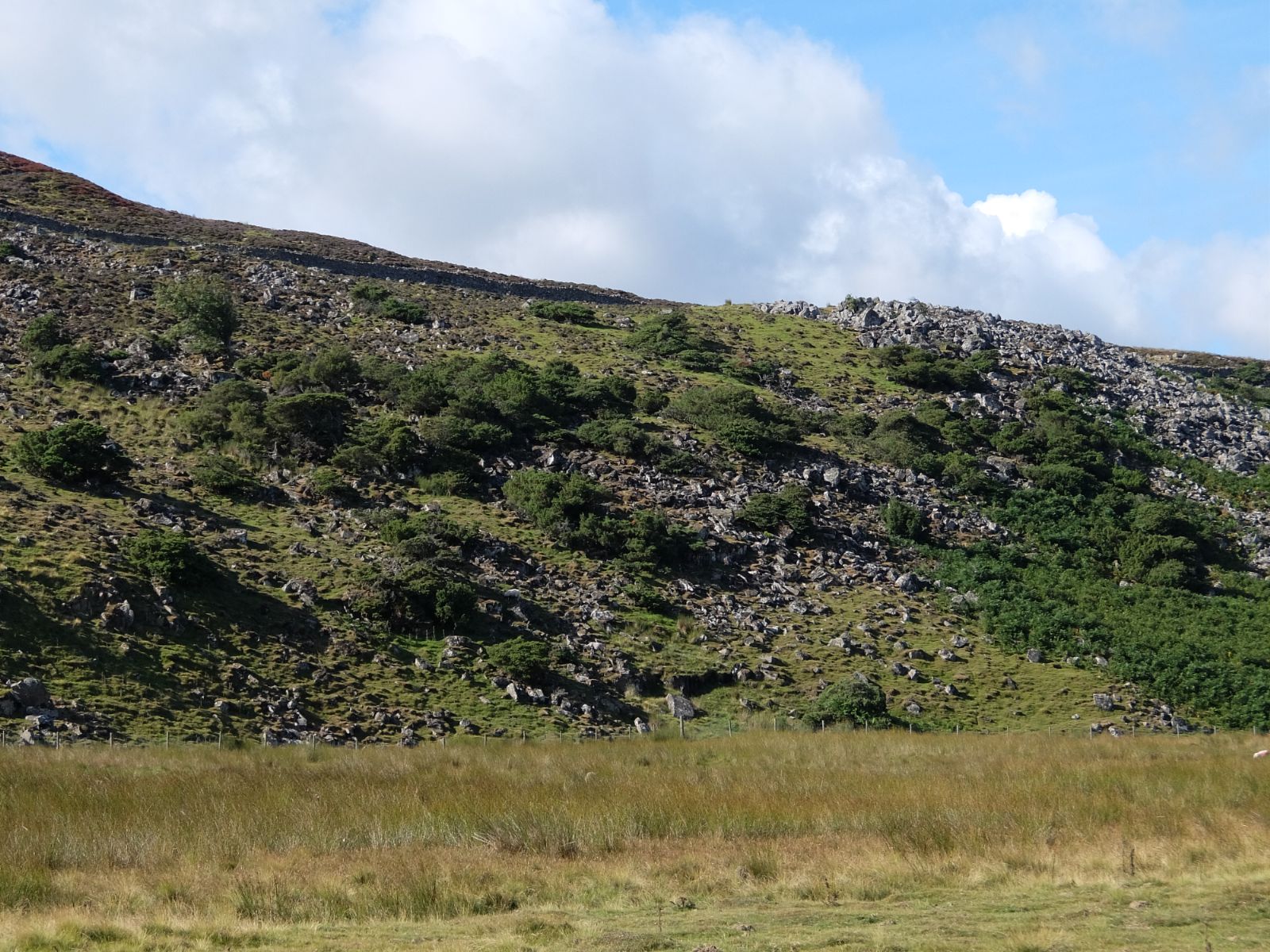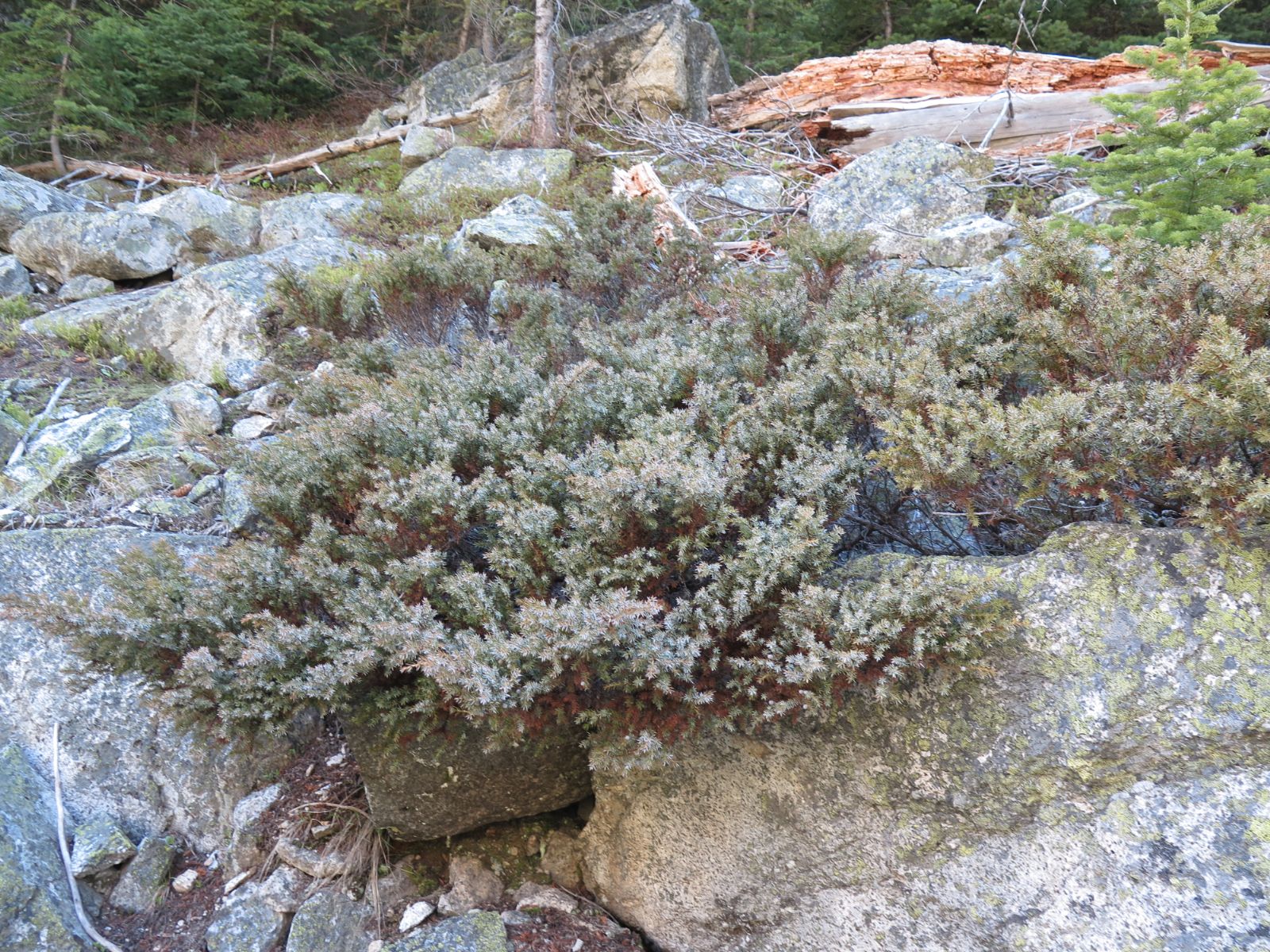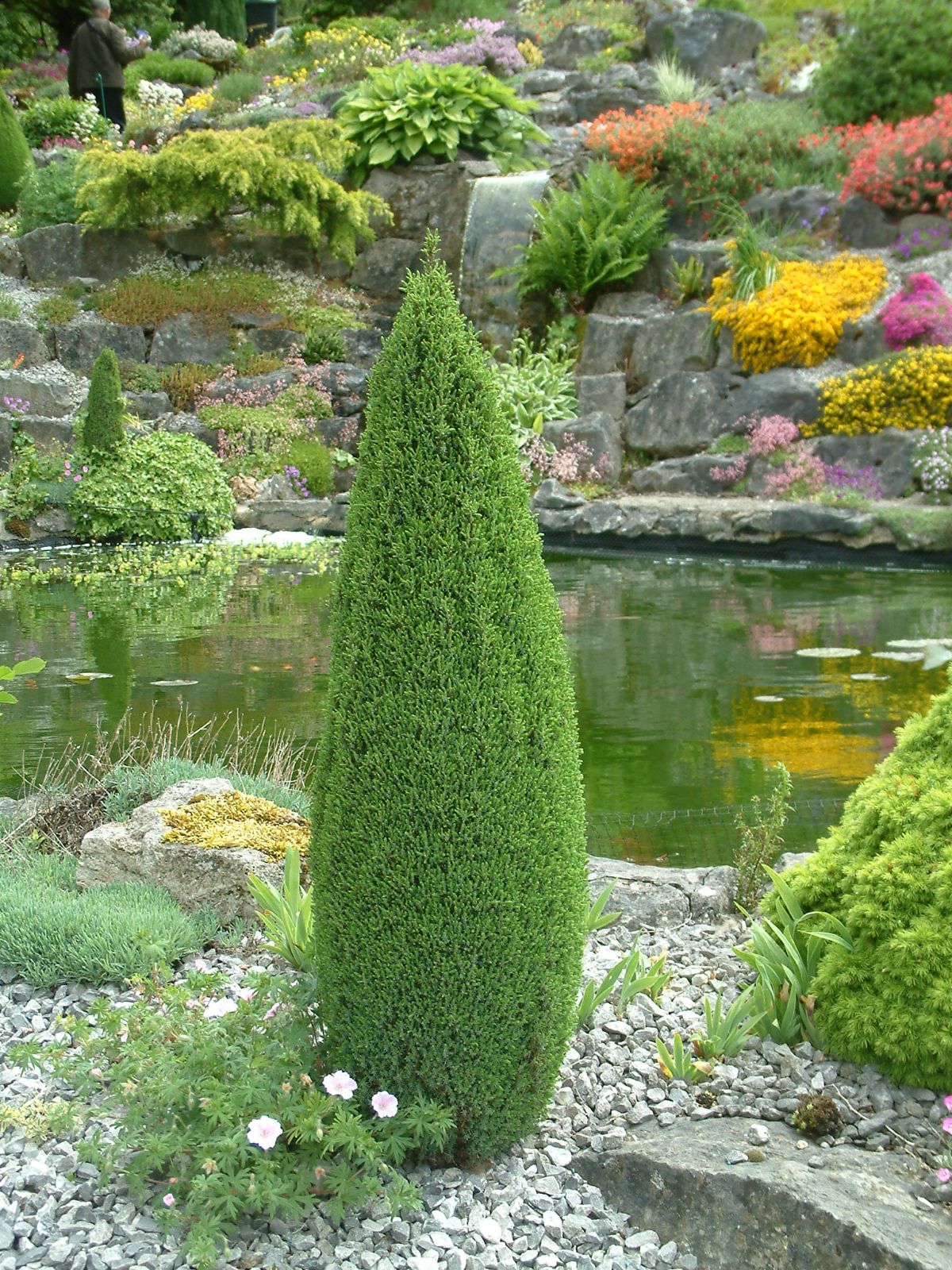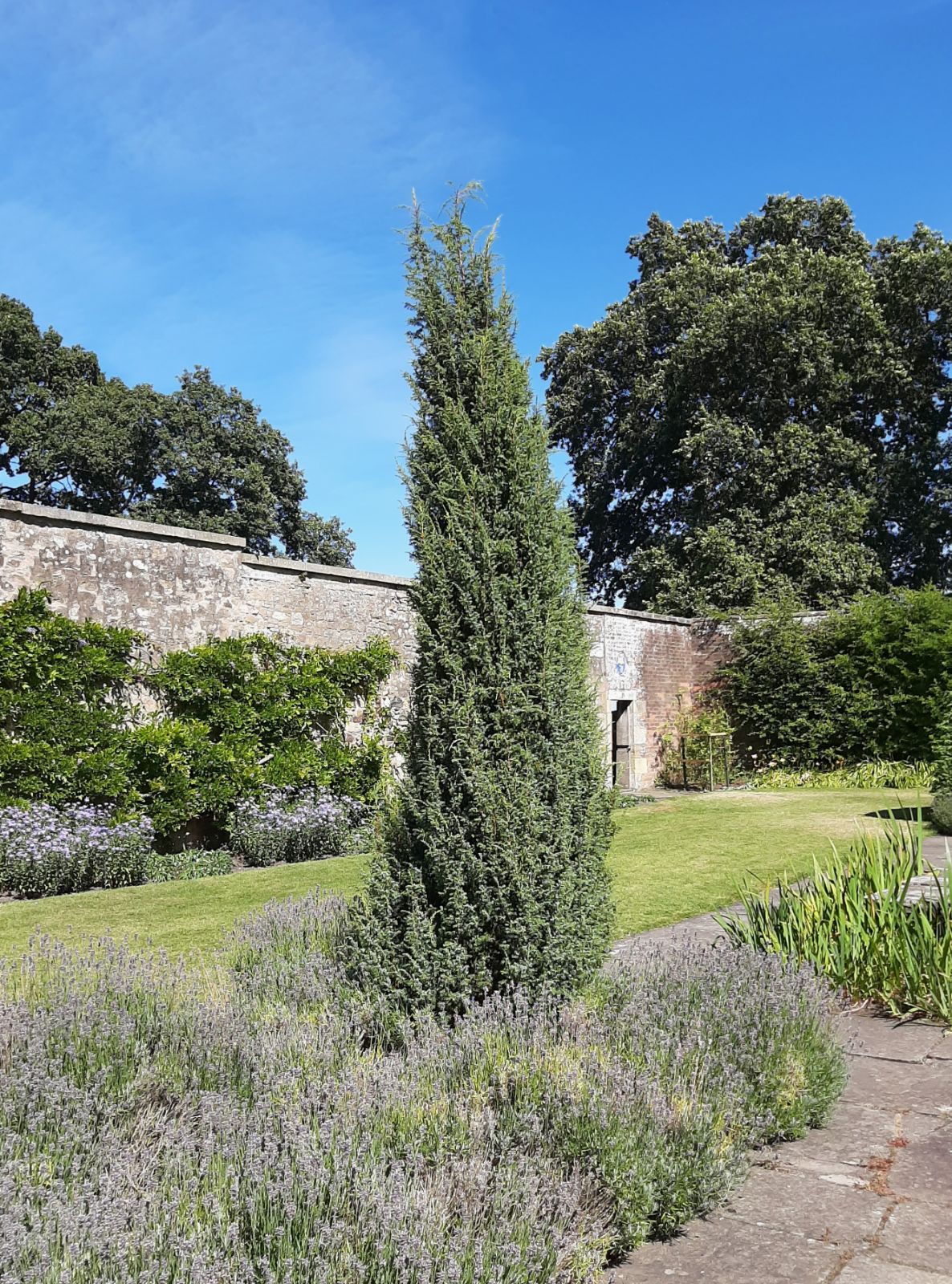Juniperus communis
Credits
Article from Bean's Trees and Shrubs Hardy in the British Isles
Recommended citation
'Juniperus communis' from the website Trees and Shrubs Online (treesandshrubsonline.
Genus
Common Names
- Common Juniper
Infraspecifics
Other taxa in genus
- Juniperus bermudiana
- Juniperus cedrus
- Juniperus chinensis
- Juniperus conferta
- Juniperus deppeana
- Juniperus drupacea
- Juniperus excelsa
- Juniperus flaccida
- Juniperus foetidissima
- Juniperus formosana
- Juniperus horizontalis
- Juniperus komarovii
- Juniperus occidentalis
- Juniperus oxycedrus
- Juniperus phoenicea
- Juniperus pingii
- Juniperus procera
- Juniperus procumbens
- Juniperus recurva
- Juniperus rigida
- Juniperus sabina
- Juniperus saltuaria
- Juniperus scopulorum
- Juniperus semiglobosa
- Juniperus squamata
- Juniperus thurifera
- Juniperus tibetica
- Juniperus virginiana
- Juniperus wallichiana
A shrub of spreading habit, sometimes a small tree, usually 6 to 12 ft high (occasionally 20 to 40 ft); prostrate forms also occur. Young shoots three-cornered, bearing the leaves in whorls of three. Leaves spreading, 1⁄4 to 5⁄8 in. long, 1⁄16 in. wide; always awl-shaped and terminated by a needle-like point, concave on the upper surface, with one comparatively broad glaucous band of stomata up the centre, divided sometimes by a green line towards the base; beneath, the leaf is green and keeled. Fruits globose or rather oval, about 1⁄4 in. in diameter, black covered with a blue bloom, and containing two or three seeds embedded in resinous mealy pulp, ripening the second or third year.
The juniper of the chalk downlands and limestone hills of Britain belongs to the typical part of a species which extends, with many variations, throughout the temperate parts of the northern hemisphere; no other coniferous species has so wide a range. In elevated gardens on calcareous soils it is, with its garden varieties, one of the most satisfactory and pleasing of evergreens, but it will thrive equally well where the soil is neutral or slightly acid. In the mountains of Europe and towards the Arctic Circle it gives way to the dwarf juniper (subsp. nana, described below). The berries of both were once used as a diuretic in medicine and are still used to flavour gin. In Norway a kind of beer is made from them.
The common juniper as described above is the typical subspecies (J. communis subsp. communis), but three others are recognised by J. Amaral Franco in Boll. Soc. Broteriana, Vol. 36 (1962), pp. 101–120, and his classification is followed in the present revision. There are also many garden varieties, of which only a few can be mentioned.
From the Supplement (Vol. V)
† cv. ‘Derrynane’. – A free-fruiting, ground-hugging clone. The original was found on a headland in Co. Kerry and propagated by cuttings (The Garden (Journ. R.H.S.), Vol. 100, p. 496 (1975)). Award of Merit 1975.
† cv. ‘Repanda’. – Of prostrate, very dense habit, the branchlets tending to stand out of the clump in their first year but becoming horizonal before they in turn produce new twigs. Leaves brownish green on the exposed side, not prickle-pointed. The original plant was found growing wild in Ireland by the nurseryman Maurice Prichard and propagated in Holland, where it is the commonest clone in nurseries (Dendroflora, loc. cit., p. 9).
'Aurea'
Young shoots and young leaves yellow; otherwise resembling the typical common juniper.'Columnaris'
Taller than ‘Compressa’ and of freer growth.'Compressa'
Common Names
Noah's Ark Juniper
A slender, cone-shaped shrub of minute dimensions, with branches and leaves so dense as to form a rigid mass, the leaves very short. This remarkable shrub is the daintiest of conifers, and probably the slowest growing of them. Plants twenty years of age will often not have reached 1{1/2} ft in height but may in time become almost twice as high. ‘… this dwarf form seems undoubtedly less hardy than the type; it frequently gets ‘browned’ by cold, cutting winds or severe frosts, and seems to resent very exposed situations – the finest specimens I have seen were in rather heavy soil and somewhat moist conditions’ (Murray Hornibrook, Dwarf and Slow-growing Conifers, 2nd ed., p. 115).
'Depressa Aurea'
A prostrate plant with the young leaves golden yellow.'Echiniformis'
Common Names
Hedgehog Juniper
Of dwarf, globose habit. Leaves opposite, rather thick. Award of Merit, 25 April 1961 (Bull. A.G.S., Vol. 30, p. 68 and p. 176 (plate)).
f. suecica (Mill.) Beissn.
Common Names
Swedish Juniper
Synonyms
J. communis var. suecica (Mill.) Ait.
J. suecica Mill.
J. communis var. fastigiata Parl., in part.
Of fastigiate habit but variable in shape and size; leaves said to be shorter than in the normal shrubby form. Found wild in N.E. Germany, Denmark, Sweden, and Norway. The Swedish juniper was first formally described by Miller in 1768, from a plant grown by him, but he mentions it in earlier (pre-Linnaean) editions of his Dictionary under the name J. vulgaris arbor. Plants (and seeds) were available in commerce in Britain by 1775, and have been in cultivation ever since, though it is very unlikely that they were all of one clone. At the present time there are at least two clones in commerce in Germany and Holland under the illegitimate cultivar name ‘Suecica’. One is very distinct from ‘Hibernica’ in its broader and looser habit and its drooping twigs. The correct name for this is ‘Pyramidalis’ (Van Ouden and Boom, Man. Cult. Conif., p. 169; F. J. Grootendorst in Dendroflora, No. 5, p. 31 and fig. on p. 32). The other, which was recently highly rated after trial at Boskoop, is a slender tree tapered at the apex, with slightly drooping outer twigs and needles soft to the touch (Grootendorst, op. cit., p. 30). This is likely to be an improvement on ‘Hibernica’ but at the moment appears to lack a distinguishing name.
'Hibernica'
Common Names
Irish Juniper
Synonyms / alternative names
'Stricta'
A narrowly conical tree of silvery grey aspect and dense habit; outside twigs erect, not drooping as in cultivated plants of f. suecica. It is very striking when in good health and effective in formal arrangements. See further under f. suecica. It is known as the Irish juniper and may be the same as the plant listed by Loddiges (1836 catalogue) as J. hibernica but this is not certain, and it may not even be of Irish origin.
'Hornibrookii'
‘This is a form which I found in Co. Galway, in the West of Ireland, among the normal bushy forms which the common juniper assumes in that country. It was a perfectly prostrate mat, flowing down over rocks and absolutely following their contours – it was then about a yard across and not more than 4 to 5 in. in height. I found it easy to propagate from cuttings, and it soon strayed into cultivation’ (M. Hornibrook, Dwarf and Slow-growing Conifers, 2nd ed., p. 111). Although the subsp. nana (q.v.) has been reported from W. Ireland, Hornibrook’s juniper does not belong to it, as has been erroneously stated (though not by Hornibrook himself), and is probably one of the many intermediates that occur between this and the typical subspecies.
'Oblonga Pendula'
Branches horizontal, drooping at the tips; branchlets pendulous. The epithet oblonga might suggest that this is a pendulous variety of J. communis var. oblonga (Bieb.) Parl., a native of the E. Caucasus and Armenia. But that variety is described as having brownish fruits, whereas ‘Oblonga Pendula’, as seen in gardens, has the fruits of typical J. communis.subsp. depressa (Pursh) Franco
Synonyms
J. communis var. depressa Pursh
J. c. var. canadensis Loud. Loud.
How, if at all, the North American representatives of the common juniper are to be differentiated from the Old World forms has never been quite clear. Franco states that the only reliable difference is that in the American plants the stomatal band on the upper surface of the leaves is very narrow – scarcely as wide as each green margin. In this subspecies, found in both the United States and Canada, the plant is usually prostrate, but not invariably so.It should be noted that the clone commonly cultivated under the name J. communis var. depressa must be wrongly named, if the character given by Franco is valid, since the leaves have a glaucous band much wider than each green margin. In this clone the exposed side of the leaves becomes tinged pale brown in winter.
subsp. hemisphaerica (J. & C. Presl) Nyman
Synonyms
J. hemisphaerica J. & C. Presl
J. depressa Stev.
J. communis var. depressa (Stev.) Boiss., not Pursh
Leaves oblong-linear, densely set on the shoots, mostly under {1/2} in. in length but occasionally longer (up to {3/4} in.), {1/16} to {1/12} in. wide, rather thick, upper surface with a broad stomatal band and covered with a waxy coat. In habit this juniper is variable; it may be erect and up to 8 ft high, prostrate (as in the Caucasian and Crimean plants), or take the form of a hemispherical cushion (as in the type from Mt Etna and the Monti Nebrodi in Sicily). A native of N. Africa, S. Europe, and the Near East.
subsp. nana Syme
Synonyms
J. communis var. montana Ait.
J. sibirica Burgsdf.
J. communis var. saxatilis Pall., nom. inedit.
J. nana Willd.
A prostrate or procumbent shrub with stout, rigid branchlets. Leaves mostly under {1/2} in. long, about {1/16} in. wide, obtuse or acute and shortly mucronate at the apex, densely set on the shoot and pointing forward along it, often incurved, stomatal band on upper surface twice to three times as wide as each green margin.Native of Eurasia in high latitudes and in mountains farther south. This juniper has been confused with prostrate forms of the common juniper but is quite distinct in the shape and posture of its leaves. Intermediate forms occur where the two subspecies are in contact.











